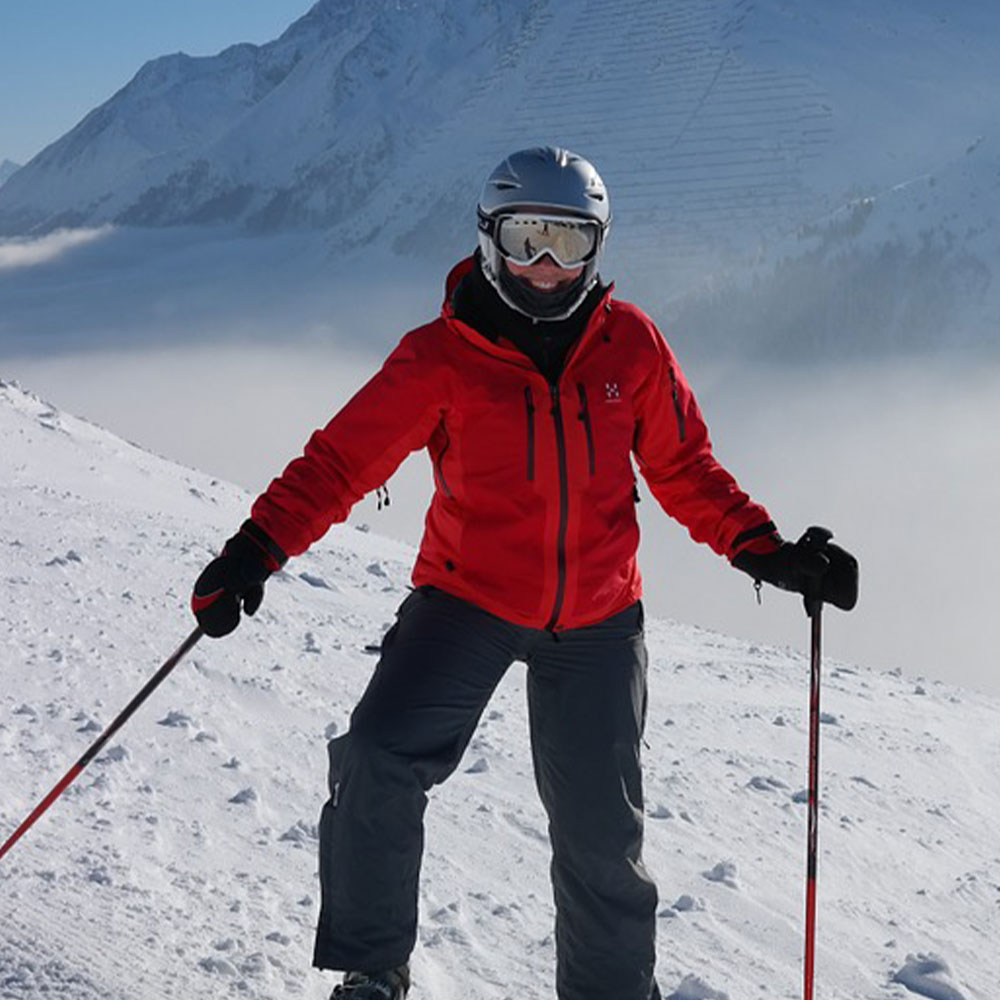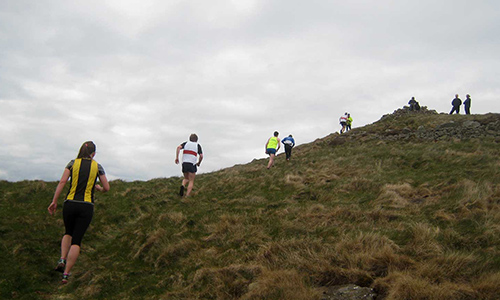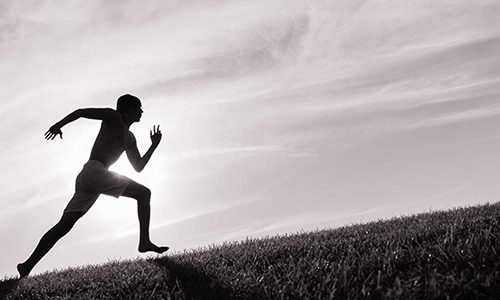Hill Running in Scotland: A Trend That Has No Stopping
Author

A keen runner, skier and nuts about cycling. Karl lives in Cumbria, where he loves encouraging his two children to follow in his outdoor lifestyle. Whilst out and about keeping active, Karl keeps a diary and shares it with Outdoor Look.
 Hill Running was never introduced as a sport, but a competition to find the fastest messenger, under the orders of King Malcolm III on Creag Choinnich in the year 1064. Over the years, and decades, the activity transformed into a sport, and today it is a low-key and non-commercialised one. In Scotland, many local running clubs organise hill races at nominal entry fees.
Hill Running was never introduced as a sport, but a competition to find the fastest messenger, under the orders of King Malcolm III on Creag Choinnich in the year 1064. Over the years, and decades, the activity transformed into a sport, and today it is a low-key and non-commercialised one. In Scotland, many local running clubs organise hill races at nominal entry fees.
One of the clubs, Scottish Hill Runners, supports the sport in Scotland and oversees a calendar of different hill races. Some popular hill racing events in Scotland are the 27-mile Lairig Ghru race from Braemar to Aviemore and the Bishop Downhill race from the summit of White Craigs above Kinnesswood in Fife. Iain Gilmore holds the record for the latter, having completed the course in just 4 minutes and 18 seconds.
What Makes It Interesting?
Hill running is often considered as a crazy sport as it deviates from the traditional flat running style, which makes it even harder. However, enthusiasts are not limited to this thought process. People choose hill running to escape the hustle-bustle of modern life. Hill running is a challenge that demands self-sufficiency and navigation, which is another factor of interest. Some hill runners tend to find pleasure in the extraordinary landscapes, which leads them to pursue this sport.
No Age Bar
Hill running is not limited to a specific age group. It all depends on one's stamina and will to pursue the challenge, be it a 15-year-old or a 55-year-old. The best example of the latter is Bill Gauld who won the Seven Hills of Edinburgh Race at 59 years of age and – now in his eighties, continues to run till date.
Eminent Personalities in this Sport
 There are a lot of big names associated with hill racing/running. Scottish runner Finlay Wild has consecutively won the Ben Nevis Race for the last eight years – his fastest time being 1 hour and 28 minutes that was set in 2016. Another renowned hill running event in Scotland is Ramsay’s Round that was devised by Charlie Ramsay. Glyn Jones was the first to finish Ramsay’s Round in winter 2002. Jasmin Paris holds the record for Ramsay’s Round by clocking 16 hours and 22 minutes in the year 2016.
There are a lot of big names associated with hill racing/running. Scottish runner Finlay Wild has consecutively won the Ben Nevis Race for the last eight years – his fastest time being 1 hour and 28 minutes that was set in 2016. Another renowned hill running event in Scotland is Ramsay’s Round that was devised by Charlie Ramsay. Glyn Jones was the first to finish Ramsay’s Round in winter 2002. Jasmin Paris holds the record for Ramsay’s Round by clocking 16 hours and 22 minutes in the year 2016.
What's the Technique?
Hill running may sound fascinating, but it requires a lot effort and homework before you decide to step in the event. The sport, thus, needs certain precautions and techniques that reduce your exhaustion tendency and help you use your stamina wisely.
Uphill running requires overcoming the gravity, so your leg muscles must be strong enough to carry you up the slope. The slanted ground also changes your foot-strike, increasing pressure on your calves and ankles. Runners should, therefore, not lean forward at the waist. Too much of leaning forward creates a negative impact on your uphill running ability as it makes use of your hip flexors hard and incorrect. It also inhibits your ability to produce a powerful toe-off during your gait.
Author

A keen runner, skier and nuts about cycling. Karl lives in Cumbria, where he loves encouraging his two children to follow in his outdoor lifestyle. Whilst out and about keeping active, Karl keeps a diary and shares it with Outdoor Look.
Categories
- Sport (28)
- Product Reviews (3)
- Team Outdoor Look (7)
- Mike Wild (2)
- Mike Payton (2)
- Suse Hammond-Pears (3)
- Snowboarding (12)
- Latest Offers (105)
- Shop Talk (1)
- Competitions (7)
- Walking (413)
- Lifestyle Fashion (8)
- Travel (86)
- Kit Guides (176)
- Workwear Clothing (6)
- Safety Workwear (4)
- Health/Fitness (289)
- Skiing (91)
- Great Outdoors (1316)
- Cycling (92)
- January 2025
- December 2024
- November 2024
- October 2024
- September 2024
- August 2024
- July 2024
- June 2024
- May 2024
- April 2024
- March 2024
- February 2024
- January 2024
- December 2023
- November 2023
- October 2023
- September 2023
- August 2023
- July 2023
- June 2023
- May 2023
- April 2023
- March 2023
- February 2023
- January 2023
- December 2022
- November 2022
- October 2022
- September 2022
- August 2022
- July 2022
- June 2022
- May 2022
- April 2022
- March 2022
- February 2022
- January 2022
- December 2021
- November 2021
- October 2021
- September 2021
- August 2021
- July 2021
- June 2021
- May 2021
- April 2021
- March 2021
- February 2021
- January 2021
- December 2020
- November 2020
- October 2020
- September 2020
- August 2020
- July 2020
- June 2020
- May 2020
- April 2020
- March 2020
- February 2020
- January 2020
- December 2019
- November 2019
- October 2019
- September 2019
- August 2019
- July 2019
- June 2019
- May 2019
- April 2019
- March 2019
- February 2019
- January 2019
- December 2018
- November 2018
- October 2018
- September 2018
- August 2018
- July 2018
- June 2018
- May 2018
- April 2018
- March 2018
- February 2018
- January 2018
- December 2017
- November 2017
- October 2017
- September 2017
- August 2017
- July 2017
- June 2017
- May 2017
- April 2017
- March 2017
- February 2017
- January 2017
- December 2016
- November 2016
- October 2016
- September 2016
- August 2016
- July 2016
- June 2016
- May 2016
- April 2016
- March 2016
- February 2016
- January 2016
- December 2015
- November 2015
- October 2015
- September 2015
- August 2015
- July 2015
- June 2015
- May 2015
- April 2015
- March 2015
- February 2015
- January 2015
- December 2014
- November 2014
- October 2014
- September 2014
- August 2014
- July 2014
- June 2014
- May 2014
- April 2014
- March 2014
- February 2014
- January 2014
- December 2013
- November 2013
- October 2013
- September 2013
- August 2013
- July 2013
- June 2013
- May 2013
- April 2013
- March 2013
- February 2013
- January 2013
- December 2012
- November 2012
- October 2012
- September 2012
- August 2012
- July 2012
- June 2012
- May 2012
- April 2012
- March 2012
- February 2012
- January 2012
- December 2011
- November 2011
- October 2011
- September 2011
- August 2011
- May 2010
- April 2010
- March 2010
- February 2010
- January 2010
- November 2009
- October 2009
- September 2009
Submit a Comment